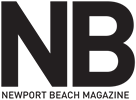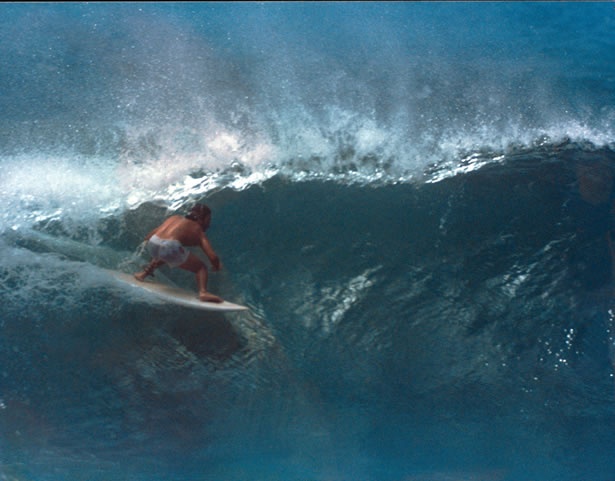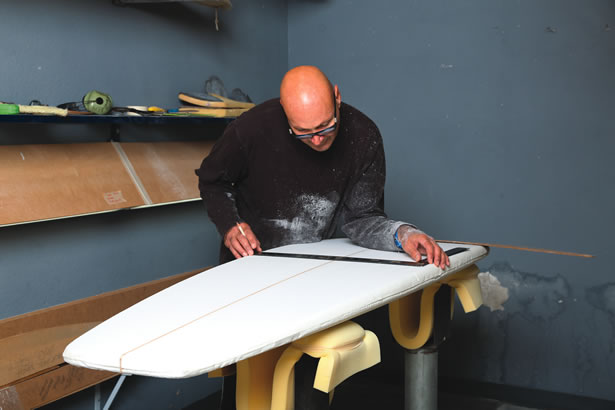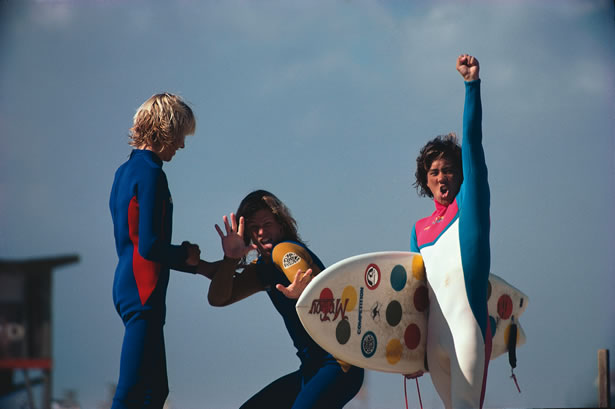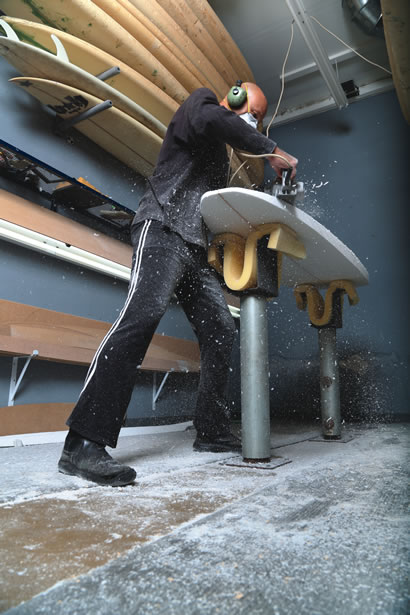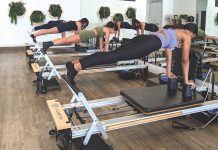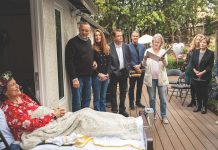Legendary Surfboard Shaper
Legendary surfboard shaper Peter Schroff returns to his original art form.– By Kathy Ochiai
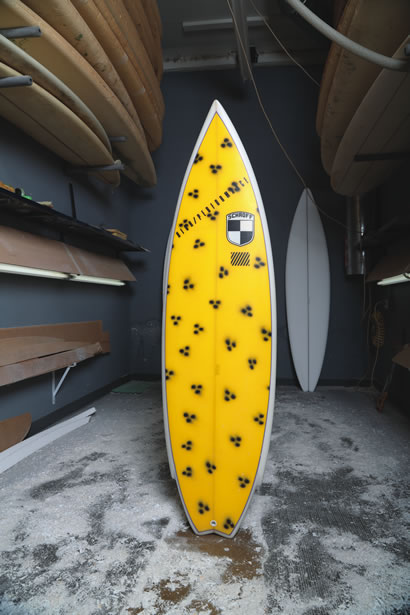 Growing up in Newport Beach in the 1960s and 1970s, surfboard shaper Peter Schroff didn’t have an ideal family life. His mother left for San Francisco to be with hippies, while his father was busy partying. So self-reliant Peter would order chipped beef on toast and “tons of coffee” for breakfast at the nearby Stuft Shirt restaurant and then come home to manufacture surfboards on his kitchen table. He created his first board when he was 14. It would be the first of thousands to come.
Growing up in Newport Beach in the 1960s and 1970s, surfboard shaper Peter Schroff didn’t have an ideal family life. His mother left for San Francisco to be with hippies, while his father was busy partying. So self-reliant Peter would order chipped beef on toast and “tons of coffee” for breakfast at the nearby Stuft Shirt restaurant and then come home to manufacture surfboards on his kitchen table. He created his first board when he was 14. It would be the first of thousands to come.
Shaped by Newport Beach
Living in Newport Beach had a tremendous effect on Peter. At Blackie’s beach between the Newport Pier and 28th Street, he thrived among the sights of colorful customized Volkswagens and professional surfers.
“Newport was like no place on Earth,” he says. “It was the most charismatic and creative nucleus of the surf universe. It is responsible for who I am today. In the 1960s, the Blackie parking [lot] could take on the world … so much style, character and creativity. I was so lucky to have it shape me.”
As a student at Newport Elementary School, Peter would draw pictures of hot rods and sell them to fellow classmates for 25 cents a piece. In junior high at Ensign Intermediate School, he was influenced by the posters and comics of underground artists like Rick Griffin, and began making posters with rock music and surf themes.
Peter had been skateboarding since he was in the first grade, and he “dreamed about surfing.” When he was 11, a friend of his father’s gave him a stolen surfboard, which he used to ride the waves for the first time.
“That was it! I found my heroin,” Peter recalls. “Looking back on what drew us to surfing was the freedom … no rules, no right or wrong way, the freedom of self-expression. It was the thing I could do as hard as Jimi Hendrix.”
With free reign in his house throughout high school, Peter began selling surfboards to friends, living on Nutter Butters, Baskin-Robbins ice cream and hamburgers from “the burger [joint] near the Flying A gas station.” Even though his parents were not a guiding force, he was surviving. “We have a choice to create a life we choose whether we come from a broken family or we graduate from Harvard,” Peter says.
Creating a Better Surfboard
After graduating from high school in 1972, Peter dedicated himself to surfboard design. His company, Schroff Surfboards, provided him with the opportunity to travel around the world to see and touch different surfboards. He learned that Australian surfer and shaper Mark Richards had made a breakthrough in modern surfing. “Mark came up with the modified fish design,” Peter explains. “The fish had the characteristic of surfing flat. It’s the nature of the board. It had no rocker. It was wide. He took it and kind of brought it into the hybrid of a regular single fin and a twin fin fish.
“It didn’t surf flat,” he continues. “It surfed on its rail. Mark put a lot of V in [the tail] and narrowed down the tail. I went to Australia to have a shaper shape one for me, and I brought it back [to Newport Beach].”
After that, Peter became best known for making a well-designed Southern California twin fin, a board with two fins on the bottom instead of one. He shaped 28 boards for himself in one year alone to study the effects of different rockers, Vs and other various surfboard elements.
“The twin fin was a radical design and a lot of people couldn’t surf it. Part of the thing was figuring out how to make a twin fin so it had a certain amount of control and it had some drive to it,” Peter says.
Vice president of Ocean & Earth, Dave Nielsen has known Peter since they were teenagers. “I’ve never had better boards than [Peter’s] personal hand-shaped guns,” he comments. “[I] would come home to Newport while living in Hawaii to pick them up even with so many good shapers on the North Shore to choose from. His shapes, whether for display or for surfing, are so beautiful to the eye. Aesthetically, the very nature of it—look, feel and touch … you knew [his boards] would work from an art appreciation aspect alone.”
The Echo Beach Era
From the mid-1970s to the early 1980s, while Peter was learning about the physics of surfboards, he was listening to the punk and new wave music of Iggy Pop, David Bowie, Elvis Costello, The Talking Heads and The Clash. With that style came an explosion of color and bold graphics. Peter was inspired to enhance the look of his boards. Famous not only for being fast and controllable, Peter’s boards also gained attention because of their bright colors and latest “high-tech” graphics—hot pink, mint green, drop shadows and grids.
This “new wave” of young surfers riding Peter’s boards also wore bright colors with bold designs, and they listened to punk music. They met at a special place in Newport called Echo Beach—a stretch of beach from 52nd to 56th streets. It wasn’t just a strip of sand and water. It was a state of mind. Surfer Anthony Gatti was a part of the Echo Beach scene. He has known Peter since 1977 and still has his surfboards made by him.
“The whole surfboard industry just bloomed from [Echo Beach], and Peter was part of that whole thing,” Anthony says. “At Echo Beach, there was a lot of energy on the sand and in the water. The local guys like Danny Kwock and Preston Murray were always at the forefront. They were pushing everybody, so it was a neat time. It was a great era. I was just a kid, but it was hot and sunny, and we had no responsibilities. We were just at the beach all day. It was just the best.”
Anthony worked at the local Hanafin Surf Shop, where Peter was the shaper for Hanafin’s Surfboards. “He’s got ‘the magic touch,’ ” Anthony explains. “And his boards were innovative because he was very artistic. He used to design boards that matched some of the trunks that Quiksilver was making. [My NHHS surf teammate Huey Johnson] would tell me that he would have Peter match his board and short colors.
“Anthony was also a surf team rider at Newport Harbor High School,” Peter adds. “Team riders like Anthony helped with the evolution of boards. I mean, I surf a certain way … everybody surfs a different way. So it was the experience of all of us put together. It was real teamwork.”
Informal surf contests were held in front of Peter’s house on 56th Street. “It was fun,” he recalls. “It wasn’t like a competitive thing. We made an adventure out of it. The team lived on the ocean, and we’d have parties. The factory was just a couple of miles away. We were like one big family … a tribe of friends with hundreds of fantastic people.”
Around 1985, Peter began promoting Schroff Surfboards with a clothing line. It grew too fast for the company’s capacity.
“My nature was to create things … to provoke, seduce and intrigue,” Peter says. “Art seems more like a passion to me. When you love something so much, you become one with it. The business part was so much pressure. I brought in people to manage it. I later found out they were not good for the company. I started spitting up blood [from the stress]. I walked away from the business.”
Peter attended the California Institute of the Arts in Los Angeles, and spent more time traveling and absorbing the art and design of other cultures.
Peter formed a design company called DAR-9, promoting products by creating brand campaigns for Gotcha, Quiksilver and Ocean Pacific. Soon Peter was designing storefronts, home and business interiors, furniture and sculpture. He left the business end to the experts, he says. “It was fantastic. The top-level managers at several surf clothing companies trusted me, trained me and gave me so many opportunities to expand artistically.”
During Peter’s earlier travels, he visited Milan, Italy, and attended a six-day global design festival known as Milano Salone. The event inspired him to create an artistic global festival called Prototype.
“Prototype [is a] platform where scientists, dancers, painters, designers, musicians [and] poets can create together through a computer interface via large-scale video projections on buildings to massive public audiences in a very portable and affordable manner anywhere in the world,” Peter explains.
In one of the event’s highlights, “Intersection, GLOW 2010,” Peter and his teammates created a 49-minute installation piece. Electronic music played while images were projected on the side of a seven-story Holiday Inn in Santa Monica.
Peter now works with computer specialists, artists, designers and craftsmen in his current company, Superlove, to make artistic visions into reality. The Superlove team brings together music, projections and props to create multi-sensory environments. Clients include Black Entertainment Television, the Fashion Institute of Design & Merchandising and the Los Angeles Philharmonic.
Old Friends
Peter grew up with Quiksilver CEO Bob McKnight. As youngsters, they would surf together from Blackie’s to 54th Street.
“We would ride our bikes and just go boardwalk to boardwalk and surf,” Bob says. “Peter was great. He always rode different, kind of oddball surfboards. He always worked the waves very uniquely and differently than anybody else. He just always wanted to do his own thing.
“For a while, surfboards were sort of … short, round and thin. Peter didn’t go for that,” Bob says. “He [would use a board with] a pointed nose and a rounder tail or one that had a weird shape and weird fins. Later on, when surfboards went normal, he kind of went abnormal. The way he approached the whole thing was just different and that’s what his personality was like, too. In his unique voice, he would describe the world differently. … He was a fun guy to be around that way.” Bob recognized Peter’s creative potential.
“I just think that, while everybody
else was noting that he was an oddball, I thought he was a savant,” Bob explains. “You know, we were trying to get some really interesting things going with [Quiksilver] ad designs and displays and racks and fixture ideas inside our stores. We were looking for things we could stick in the store that would draw attention and that were very unique. We were trying to get the oddities of Peter’s style out into our products and displays.”
Bob recalls that Peter built a “strangely shaped,” giant 12-foot-long red surfboard for the Laguna Beach Quiksilver store. Then he placed many small golden statues, which he had purchased at thrift shops and garage sales, onto the deck of the board.
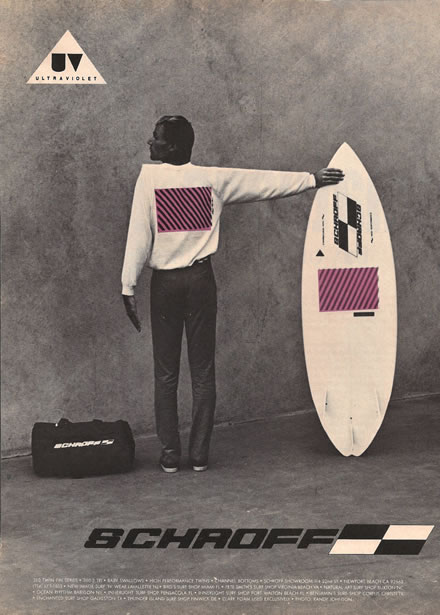 “It’s still in our store in Laguna Beach,” Bob says. “It’s just amazing. Everybody comes in and goes, ‘What is that thing?’
“It’s still in our store in Laguna Beach,” Bob says. “It’s just amazing. Everybody comes in and goes, ‘What is that thing?’
“Peter is and always has been very different and quite eccentric,” he continues. “He is a good friend and a great guy.”
A Return to Shaping
In 2010, Peter began shaping boards again still under the name of Schroff Surfboards. “Someone asked me to do it,” he says. “I probably never would have gotten around to it if it weren’t for somebody pushing me. Following 20 years of riding clear [white] ‘beaver tail’ boards and wearing black wetsuits, people are using color on their boards, and they’re wearing colored wetsuits, too.”
According to Peter, twin fins, quads (four fins) and fishes (fish-shaped) boards are being explored under a new light. Foam is more buoyant allowing for thinner, lighter and more responsive boards. Removable fin systems allow the shaper to experiment with different fin placements.
“One of the biggest breakthroughs I’ve learned about in design is that heavy concave bottoms give your board a fantastic boost of energy,” Peter says. “I ride pretty much the same shape as I did 25 years a
go … a 6-foot by 6-inch board with a very narrow rounded nose and a wide baby swallowtail. I call this the Super Series shape. The main addition to this is the concave bottom.”
So Peter, a local grom born at Hoag Hospital, is back in town and ready to shape just about any kind of board a surfer might need. Making surfboards is not just a business for Peter; it’s a passion. He says, “I love [creating boards] and I love meeting with people and talking with them … I get the cake and the frosting both.” NBM

